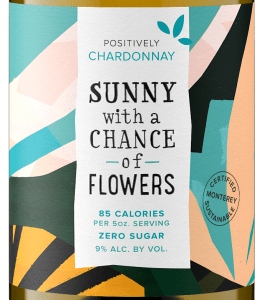At this time of year, many wine writers and publications put together their lists of the best wines of the year. (OK, I’m a few weeks late.) I’ve always been reluctant to do such a list, because there are so many wines I don’t taste, and that’s even more true now, during the pandemic years.
In a normal year, I taste hundreds of wines, some in blind tastings at home, many in big walk-around tastings, and others during trips to wine-producing regions. The last two opportunities pretty much dried up after Covid took off.
Still, I tasted a number of surprising wines last year – bottles that are currently available, as well as some pretty astonishing ones from my cellar. Let’s start with some wines that were current releases last year. Some should still be available; others have sold out, but you should watch for future vintages. I’m not saying these were the best wines I tasted last year, but they surprised me for one reason or another.
Sometimes a wine can be surprising because it originated in what would seem to be an unlikely place. I visited El Dorado County in California’s Sierra Foothills in June, before the area was hit by the Caldor Fire. The foothills often are associated with reds like zinfandel and barbera. But some of the most impressive wines I tasted were whites, like the 2020 Edio Vineyards Albariño, which was fragrant and very expressive, with racy golden apple and peach flavors. It was easily one of the best albariños I tasted last year. Also excellent: the 2018 Madroña Signature Collection Dry Riesling, with its bright spiced apple and lime flavors, hint of petrol and a whisper of sweetness. Neither wine is currently available on the wineries’ websites, but Madroña has at least one other riesling available. (I’ll tell you more about the county, including its recovery from the fire, in the coming weeks.)

Sometimes the surprise lies in getting reacquainted with a type of wine and realizing that you forgot how delicious it is. That was the case with frappato, a lightish, refreshing red from Sicily. The 2020 Duca di Salaparuta “Calanica” Frappato (just $11!) is fresh and lively, with aromas and flavors of strawberries and strawberry jam, accented by hints of rose petals and white pepper. It’s positively gulpable.
Even as the natural wine movement has gained traction, I admit to being a little wary about wines with no added sulfites, because I question their stability and longevity. And I’ve been burned more than a few times. But I really enjoyed the no-sulfites-added 2019 Domaine Bousquet “Virgen” Red Blend ($13) from the Tupungato region of Mendoza, Argentina. It’s bright and fruity, with dark berry and berry compote notes. A bottle of 2018 not only had held up but was actually a little better and more complex, with a note of graphite.

I was also skeptical of the lower-alcohol Sunny With a Chance of Flowers wines from Scheid Family Wines in Monterey County. But the chardonnay, in particular – at 9 percent alcohol – was a big surprise. I put it in a blind tasting with other Monterey chardonnays, and it more than held its own. It was creamy, with lemon curd and mango flavors and a saline quality. I tasted the 2018; 2019 is the current vintage. The pinot noir was also very good. Both are dry.
I also spent a lot of time sampling some of the wines that I’ve collected over the years. There were the wines that you expect to be good – an old vintage of La Tâche or Aldo Conterno Barolo, for example – but there were genuine surprises. Wines that kind of got lost in the cellar and were never meant to age for more than a few years, but turned out to be fantastic after 25 or 30 years.
One type of wine that has exemplified this is old zinfandel. Even if you’ll never have the opportunity to taste these particular wines, I think they offer a lesson in the value of wines that are balanced.
There have been wonderful Ridge zins from the early 1990s. That they were so good wasn’t entirely unexpected, since I’ve tasted a number of old Ridge zins over the years. There was also a great Lytton Springs zinfandel from the time before Ridge acquired the winery.

A 1993 V. Sattui Howell Mountain Zinfandel was still incredibly fresh, with spicy berry flavors. And a 1993 Peachy Canyon Eastside Zinfandel from Paso Robles was elegant and fresh, with red fruit and a hint of cedar.

The thing that all these wines had in common was a reasonable level of alcohol. None of them exceeded 14.5 percent (at least that’s what the labels said). I can’t say with certainty that some 15 or 16 percent alcohol zins won’t age as well, but I did taste a 1993 Peachy Canyon Dusi Ranch Zinfandel that clocked in at 15.1 percent, and it was very tired and flat. Nothing like the delicious Eastside bottling.
All this might not matter to you if you love your big zins when they’re young enough to smack you in the face with jammy fruit. I generally prefer something that’s a little more toned down, more subtle. Although I don’t have tasting notes from the wines when they were young, I obviously liked them enough to buy them. And I never intended to age them 30 years.
But what a treat – and surprise – to find that wines that were balanced when young had aged gracefully into something that offered a different kind of deliciousness. If you’ve got the space to store them properly, consider tucking away a few bottles and trying them in a few years. (But I don’t necessarily recommend waiting 30 years!)